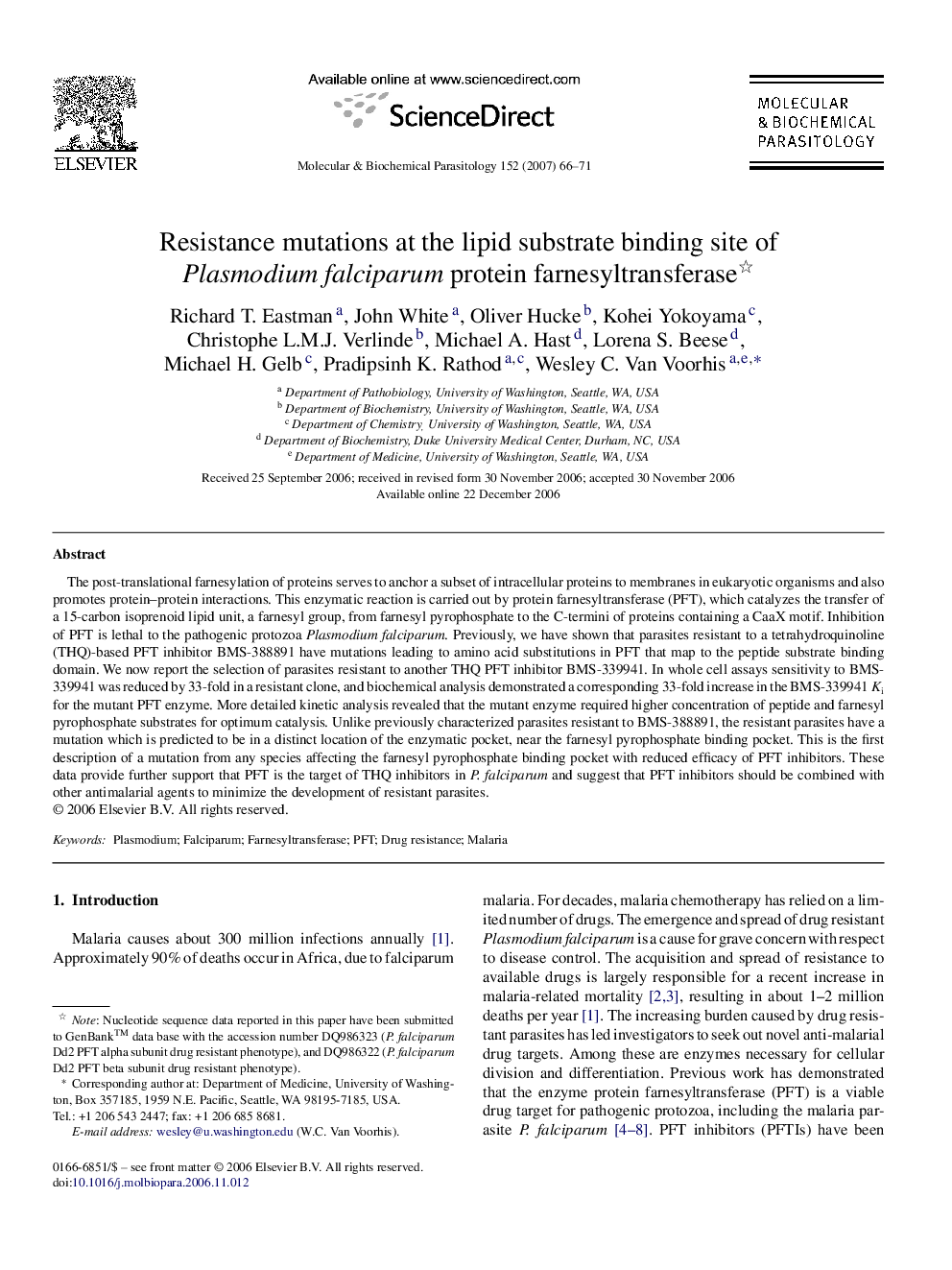| Article ID | Journal | Published Year | Pages | File Type |
|---|---|---|---|---|
| 5916195 | Molecular and Biochemical Parasitology | 2007 | 6 Pages |
Abstract
The post-translational farnesylation of proteins serves to anchor a subset of intracellular proteins to membranes in eukaryotic organisms and also promotes protein-protein interactions. This enzymatic reaction is carried out by protein farnesyltransferase (PFT), which catalyzes the transfer of a 15-carbon isoprenoid lipid unit, a farnesyl group, from farnesyl pyrophosphate to the C-termini of proteins containing a CaaX motif. Inhibition of PFT is lethal to the pathogenic protozoa Plasmodium falciparum. Previously, we have shown that parasites resistant to a tetrahydroquinoline (THQ)-based PFT inhibitor BMS-388891 have mutations leading to amino acid substitutions in PFT that map to the peptide substrate binding domain. We now report the selection of parasites resistant to another THQ PFT inhibitor BMS-339941. In whole cell assays sensitivity to BMS-339941 was reduced by 33-fold in a resistant clone, and biochemical analysis demonstrated a corresponding 33-fold increase in the BMS-339941 Ki for the mutant PFT enzyme. More detailed kinetic analysis revealed that the mutant enzyme required higher concentration of peptide and farnesyl pyrophosphate substrates for optimum catalysis. Unlike previously characterized parasites resistant to BMS-388891, the resistant parasites have a mutation which is predicted to be in a distinct location of the enzymatic pocket, near the farnesyl pyrophosphate binding pocket. This is the first description of a mutation from any species affecting the farnesyl pyrophosphate binding pocket with reduced efficacy of PFT inhibitors. These data provide further support that PFT is the target of THQ inhibitors in P. falciparum and suggest that PFT inhibitors should be combined with other antimalarial agents to minimize the development of resistant parasites.
Related Topics
Life Sciences
Biochemistry, Genetics and Molecular Biology
Molecular Biology
Authors
Richard T. Eastman, John White, Oliver Hucke, Kohei Yokoyama, Christophe L.M.J. Verlinde, Michael A. Hast, Lorena S. Beese, Michael H. Gelb, Pradipsinh K. Rathod, Wesley C. Van Voorhis,
